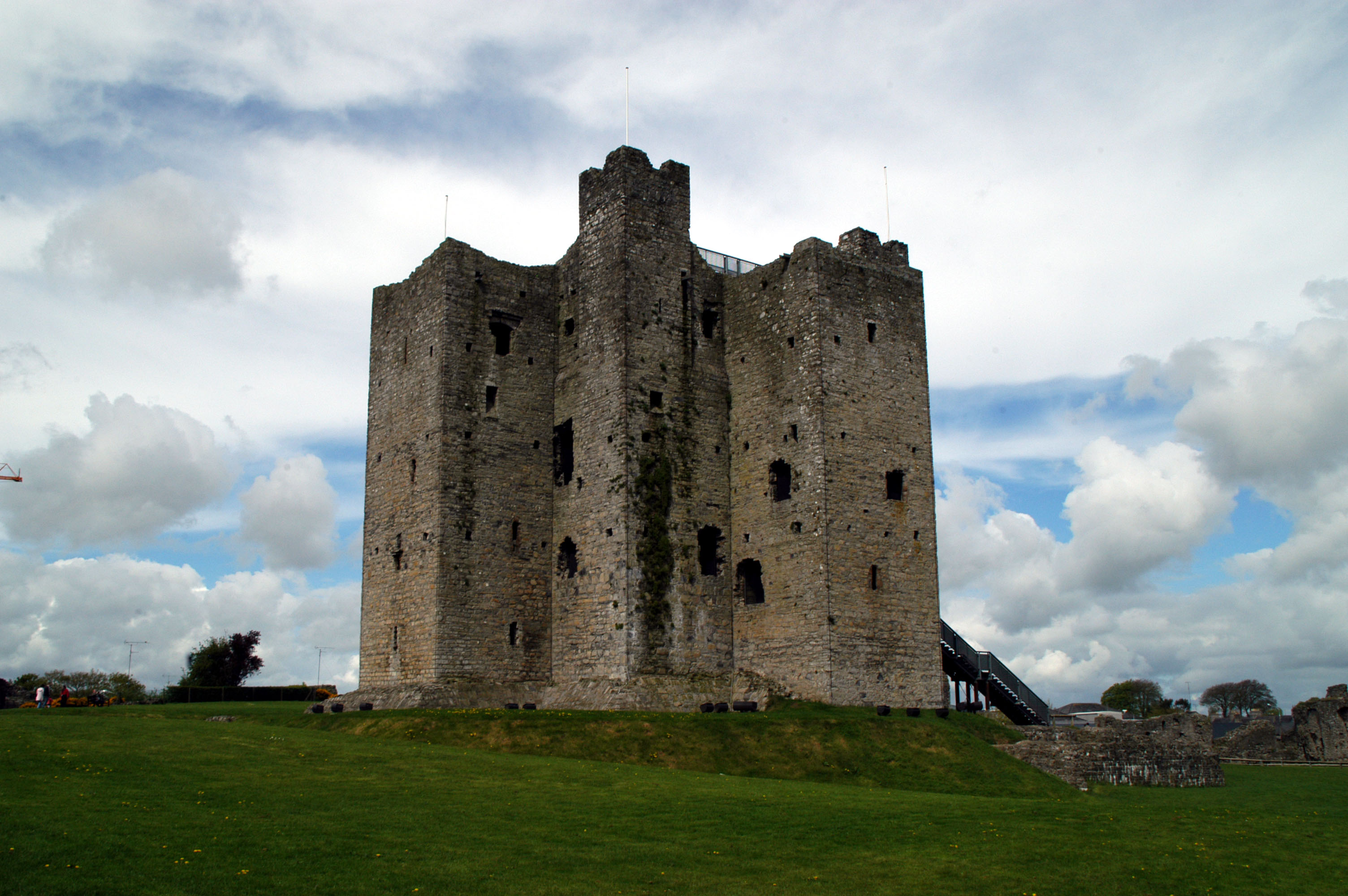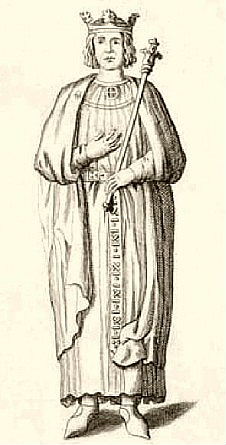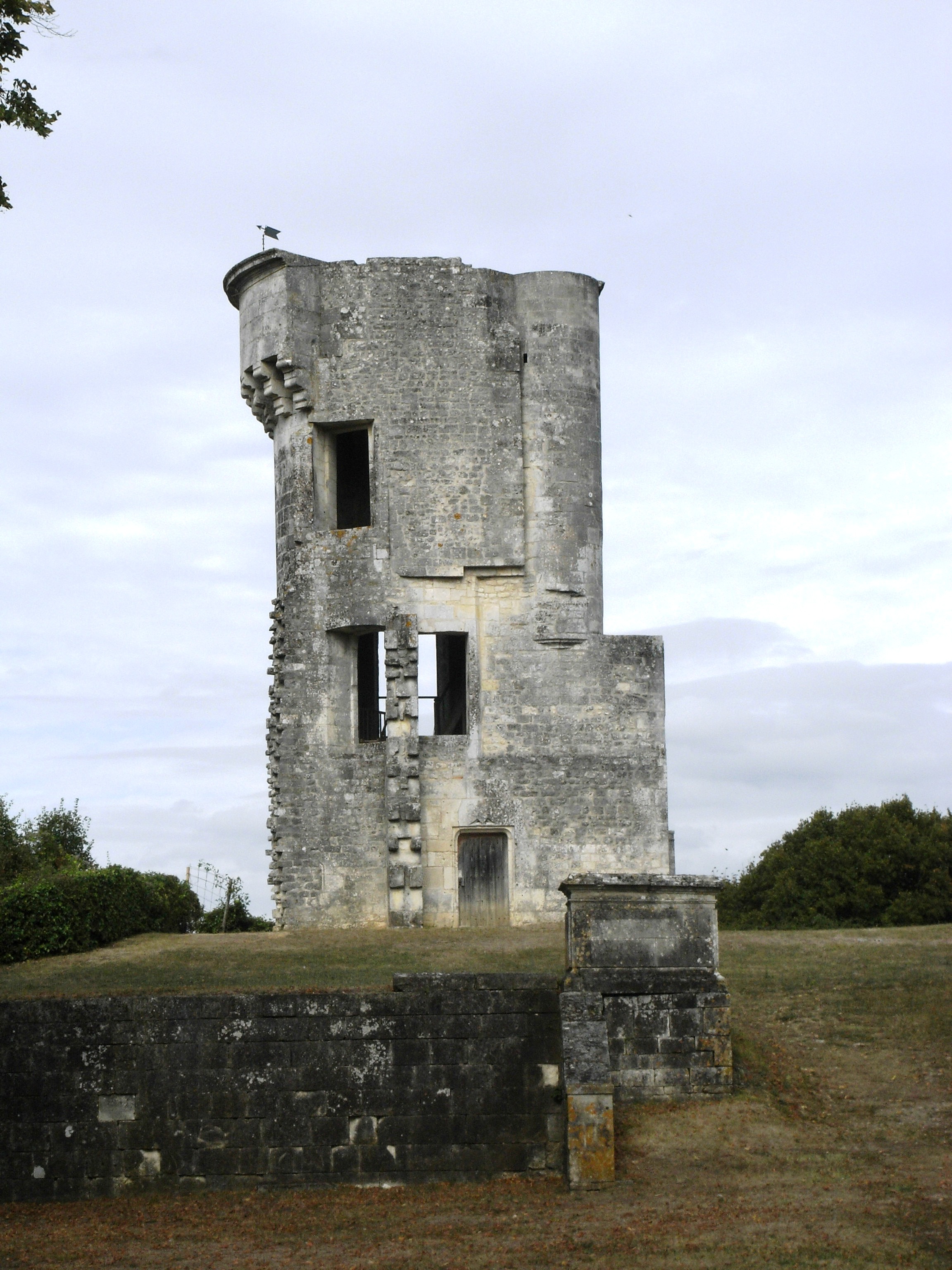|
1172
Year 1172 ( MCLXXII) was a leap year starting on Saturday of the Julian calendar. Events By place Europe * April–May – BĂ©la III returns to Hungary â where he is acclaimed king by the Hungarian nobility, after the death (possibly from poison) of his elder brother Stephen III, on March 4. * May 28 – Doge Vitale II Michiel, accused at a General Assembly at the Ducal Palace, for the destruction of the Venetian fleet, is stabbed to death by an angry mob at Venice. * Summer – The 14-year-old Richard (later Richard I of England) is formally recognized as duke of Aquitaine. The ceremony takes place at the church of St. Hilary in Poitiers. * A Muslim rebellion is quelled at Prades in Catalonia; this event marks the end of the pacification of the lands recently conquered by Count Ramon Berenguer IV ("the Saint"). Britain * April 17 – Henry II receives homage from the Irish princes who include Domnall MĂłr Ua Briain, king of Munster. He gra ... [...More Info...] [...Related Items...] OR: [Wikipedia] [Google] [Baidu] |
BĂ©la III Of Hungary
BĂ©la III (, , ; 114823 April 1196) was King of Hungary and King of Croatia, Croatia between 1172 and 1196. He was the second son of King GĂ©za II of Hungary, GĂ©za II and GĂ©za's wife, Euphrosyne of Kiev. Around 1161, GĂ©za granted BĂ©la a duchy, which included Croatia in the union with Hungary, Croatia, central Dalmatia and possibly Sirmium. In accordance with a peace treaty between his elder brother, Stephen III of Hungary, Stephen III, who succeeded their father in 1162, and the Byzantine Emperor Manuel I Komnenos, BĂ©la moved to Constantinople in 1163. He was renamed to Alexios, and the emperor granted him the newly created senior Byzantine aristocracy and bureaucracy, court title of ''despotes''. He was betrothed to the Emperor's daughter, Maria Komnene (daughter of Manuel I), Maria. BĂ©la's patrimony caused armed conflicts between the Byzantine Empire and the Kingdom of Hungary between 1164 and 1167, because Stephen III attempted to hinder the Byzantines from taking contr ... [...More Info...] [...Related Items...] OR: [Wikipedia] [Google] [Baidu] |
Stephen III Of Hungary
Stephen III (, ; ; summer of 11474 March 1172) was King of Hungary and Croatia between 1162 and 1172. He was crowned king in early June 1162, shortly after the death of his father, GĂ©za II. However, his two uncles, Ladislaus and Stephen, who had joined the court of the Byzantine Empire, challenged his right to the crown. Only six weeks after his coronation, the Byzantine Emperor Manuel I Komnenos launched an expedition against Hungary, forcing the Hungarian lords to accept Ladislaus' rule. Stephen sought refuge in Austria, but returned and seized Pressburg (now Bratislava in Slovakia). Ladislaus, who died on 14 January 1163, was succeeded by Stephen's younger uncle and namesake, Stephen IV, without resistance, but his rule was unpopular. The young Stephen defeated his uncle on 19 June 1163 and expelled him from Hungary. Stephen IV attempted to regain his throne with Emperor Manuel I's support, but the latter made peace with Stephen III. He agreed to send his younger brother, ... [...More Info...] [...Related Items...] OR: [Wikipedia] [Google] [Baidu] |
Hugh De Lacy, Lord Of Meath
Hugh de Lacy, Lord of Meath, 4th Baron Lacy (; before 1135 â 25 July 1186), was an Anglo-Normans, Anglo-Norman landowner and royal office-holder. He had substantial land holdings in Herefordshire and Shropshire. Following his participation in the Anglo-Norman invasion of Ireland, he was granted, in 1172, the lands of the Kingdom of Meath by the Anglo-Norman Henry II of England, King Henry II, but he had to gain control of them. The Lordship of Meath was then the most extensive Liberty (division), liberty in Lordship of Ireland, Ireland. Early life Hugh de Lacy was the son of Gilbert de Lacy (died after 1163) of Ewyas Lacy, Weobley, and Ludlow. He is said to have had a dispute with Josce de Dinan as to certain lands in Herefordshire in 1154. He was in possession of his father's lands before 1163, and in 1165â66 held fifty-eight and three-quarters knight's fees, and had nine tenants without knight service. Career in Ireland In October 1171 Lacy went over with Henry II as pa ... [...More Info...] [...Related Items...] OR: [Wikipedia] [Google] [Baidu] |
Vitale II Michiel
Vitale II Michiel (also spelled ''Vital II Michiel'') was Doge of Venice from 1155 to 1172. Vitale Michiel became Doge of Venice at a time when Venice's relations with the Byzantine Empire were becoming increasingly strained. At the same time, on account of the growing profitability of mainland Italian markets, Venice was trying to remain on good terms with the Western Emperor, Frederick Barbarossa. But eventually, Venice was to come into conflict with both East and West. In 1158, much of Northern Italy was in open revolt against Frederick after his crossing of the Alps. In August 1159, the towns of Milan, Crema, Brescia and Piacenza founded the Lombard League with backing from Pope Adrian and the Kingdom of Sicily. On September 1, 1159, Pope Adrian died, and during the enthronement of his elected successor, Alexander III, the papacy was usurped by a supporter of Frederick, Victor IV. The papacy was disputed for the next 18 years, although most of Europe backed Alexander II ... [...More Info...] [...Related Items...] OR: [Wikipedia] [Google] [Baidu] |
Danishmendids
The Danishmendids or Danishmends () were a Turkish dynasty. These terms also refer to the Turkish state in Anatolia. It existed from 1071/1075 to 1178 and is also known as the Danishmendid Beylik (). The dynasty was centered originally around Sivas, Tokat, and Niksar in central-northeastern Anatolia, and extended as far west as Ankara and Kastamonu for a time, and as far south as Malatya, which they captured in 1103. In the early 12th century, the Danishmends were rivals of the Seljuk Sultanate of Rum, which controlled much of the territory surrounding the Danishmend lands, and they fought extensively against the Crusaders. The dynasty was established by Danishmend Gazi for whom historical information is rather scarce and was generally written long after his death. His title or name, ''DÄnishmand'' () means "wise man" or "one who searches for knowledge" in Persian. Origins The Turkoman Chepni Danishmendid dynasty was founded by Danishmend Gazi. Sources about Danishmend G ... [...More Info...] [...Related Items...] OR: [Wikipedia] [Google] [Baidu] |
Kingdom Of Meath
Meath ( ; ; ) was a kingdom in Ireland from the 1st to the 12th century AD. Its name means "middle," denoting its location in the middle of the island. At its greatest extent, it included all of County Meath (which takes its name from the kingdom), all of County Westmeath, and parts of counties Cavan, Dublin, Kildare, Longford, Louth and Offaly. History ''Mide'' originally referred to the area around the Hill of Uisneach in County Westmeath, where the festival of Beltaine was celebrated. The larger province of Meath, between the Irish Sea and the Shannon, is traditionally said to have been created by TĂșathal Techtmar, an exemplar king, in the first century from parts of the other four provinces. In the fourth and fifth centuries its territories were taken over by the UĂ NĂ©ill from Connacht and they pushed out Laigin tribes. The UĂ NĂ©ill assumed the ancient titles of Kings of Uisnech in ''Mide'' and Kings of Tara in ''Brega'' and claimed a cattle-tribute, the ... [...More Info...] [...Related Items...] OR: [Wikipedia] [Google] [Baidu] |
Henry The Young King
Henry the Young King (28 February 1155 â 11 June 1183) was the eldest son of Henry II of England and Eleanor of Aquitaine to survive childhood. In 1170, he became titular King of England, Duke of Normandy, Count of Anjou and Maine. Henry the Young King was the only English king since the Norman Conquest to be crowned during his father's reign, but he was frustrated by his father's refusal to grant him meaningful autonomous power. He died aged 28, six years before his father, during the course of a campaign in Limousin against his father and his brother Richard. Early life Little is known of the young Henry before the events associated with his marriage and coronation. His mother's children by her first marriage to Louis VII of France were Marie and Alix. He had one elder brother, William (d. 1156), and his younger siblings included Matilda, Richard, Geoffrey, Eleanor, Joan and John. In June 1170, the fifteen-year-old Henry was crowned king during his father's li ... [...More Info...] [...Related Items...] OR: [Wikipedia] [Google] [Baidu] |
Richard I Of England
Richard I (8 September 1157 â 6 April 1199), known as Richard the Lionheart or Richard CĆur de Lion () because of his reputation as a great military leader and warrior, was King of England from 1189 until his death in 1199. He also ruled as Duke of Normandy, Duke of Aquitaine, Aquitaine, and Duchy of Gascony, Gascony; Lord of Cyprus in the Middle Ages, Cyprus; Count of Poitiers, Counts and dukes of Anjou, Anjou, Count of Maine, Maine, and Count of Nantes, Nantes; and was overlord of Brittany at various times during the same period. He was the third of five sons of Henry II of England and Eleanor of Aquitaine and was therefore not expected to become king, but his two elder brothers predeceased their father. By the age of 16, Richard had taken command of his own army, putting down rebellions in Poitou against his father. Richard was an important Christian commander during the Third Crusade, leading the campaign after the departure of Philip II of France and achieving sev ... [...More Info...] [...Related Items...] OR: [Wikipedia] [Google] [Baidu] |
Kingdom Of Hungary (1000â1301)
The high medieval Kingdom of Hungary was a regional power in central Europe. It came into existence in Central Europe when Stephen I of Hungary, Stephen I, Grand Prince of the Hungarians, was crowned King of Hungary, king in 1000 or 1001. He reinforced central authority and forced his subjects to accept Christianity. Although all written sources emphasize only the role played by Germans, German and Italians, Italian knights and clerics in the process, a significant part of the Hungarian language, Hungarian vocabulary for agriculture, religion was taken from Slavic languages. Civil wars and pagan uprisings, along with attempts by the Holy Roman emperors to expand their authority over Kingdom of Hungary, Hungary, jeopardized the new monarchy. The monarchy stabilized during the reigns of Ladislaus I of Hungary, Ladislaus I (1077â1095) and Coloman I of Hungary, Coloman (1095â1116). These rulers occupied Croatia and Dalmatia with the support of a part of the local population. Bot ... [...More Info...] [...Related Items...] OR: [Wikipedia] [Google] [Baidu] |
March 4
Events Pre-1600 * AD 51 – Nero, later to become Roman emperor, is given the title '' princeps iuventutis'' (head of the youth). * 306 – Martyrdom of Saint Adrian of Nicomedia. * 581 – Yang Jian declares himself Emperor Wen of Sui, ending the Northern Zhou and beginning the Sui dynasty. * 852 – Croatian Knez Trpimir I issues a statute, a document with the first known written mention of the Croats name in Croatian sources. * 938 – Translation of the relics of martyr Wenceslaus I, Duke of Bohemia, Prince of the Czechs. * 1152 – Frederick I Barbarossa is elected King of Germany. * 1238 – The Battle of the Sit River begins two centuries of Mongol horde domination of Rus. * 1351 – Ramathibodi becomes King of Siam. * 1386 – WĆadysĆaw II JagieĆĆo (Jogaila) is crowned King of Poland. * 1461 – Wars of the Roses in England: Lancastrian King Henry VI is deposed by his House of York cousin, who then becomes ... [...More Info...] [...Related Items...] OR: [Wikipedia] [Google] [Baidu] |
Henry II Of England
Henry II () was King of England The monarchy of the United Kingdom, commonly referred to as the British monarchy, is the form of government used by the United Kingdom by which a hereditary monarch reigns as the head of state, with their powers Constitutional monarchy, regula ... from 1154 until his death in 1189. During his reign he controlled Kingdom of England, England, substantial parts of Wales in the High Middle Ages, Wales and Lordship of Ireland, Ireland, and much of Kingdom of France, France (including Duchy of Normandy, Normandy, County of Anjou, Anjou, and Duchy of Aquitaine, Aquitaine), an area that altogether was later called the Angevin Empire, and also held power over Kingdom of Scotland, Scotland and the Duchy of Brittany. Henry was the eldest son of Geoffrey Plantagenet, Count of Anjou, and Empress Matilda, Matilda, daughter of Henry I of England. By the age of fourteen, he became politically and militarily involved in The Anarchy, his mother's efforts ... [...More Info...] [...Related Items...] OR: [Wikipedia] [Google] [Baidu] |
Doge's Palace
The Doge's Palace (''Doge'' pronounced ; ; ) is a palace built in Venetian Gothic architecture, Venetian Gothic style, and one of the main landmarks of the city of Venice in northern Italy. The palace included government offices, a jail, and the residence of the Doge of Venice, the elected authority of the former Republic of Venice. It was originally built in 810, rebuilt in 1340 and extended and modified in the following centuries. It became a museum in 1923 and is one of 11 museums run by the Fondazione Musei Civici di Venezia. History In 810, Doge Agnello Participazio moved the seat of government from the island of Malamocco to the area of the present-day Rialto, when it was decided a ''palatium duci'' (Latin for "ducal palace") should be built. However, no trace remains of that 9th-century building as the palace was partially destroyed in the 10th century by a fire set by citizens rebelling against Doge Pietro IV Candiano. The following reconstruction works were undertaken ... [...More Info...] [...Related Items...] OR: [Wikipedia] [Google] [Baidu] |









